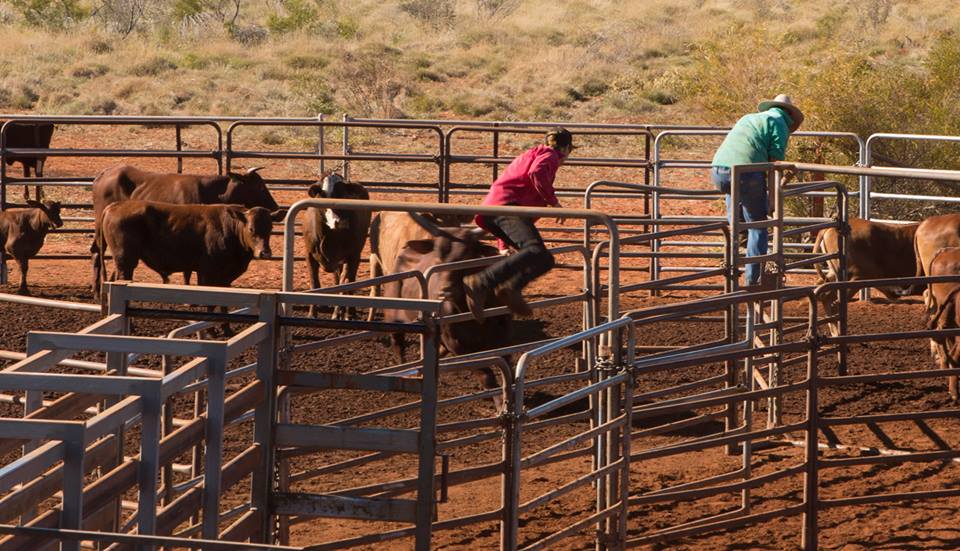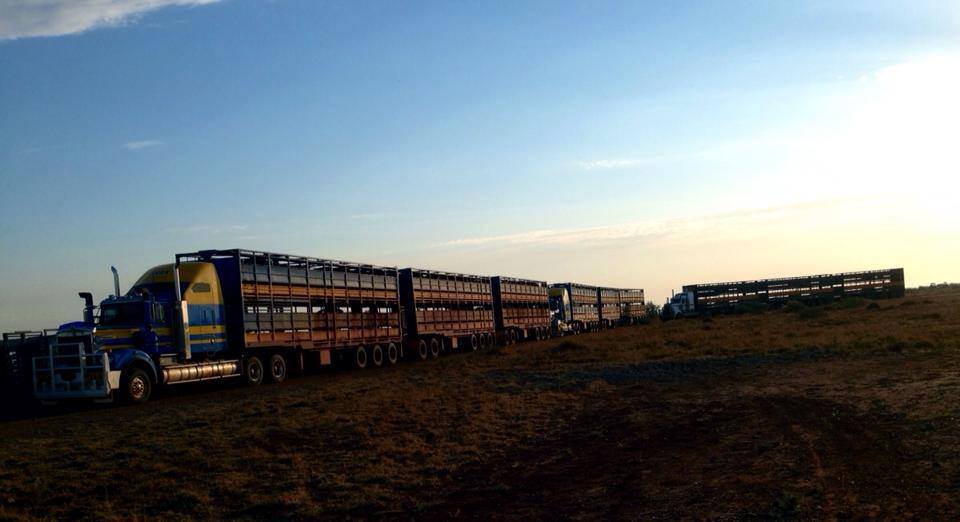Heading out bush
Host: Warrawagine Station
Written by – Caitlin, Station Hand, Warragine Station.
Each year after the breeder cattle around the homestead have been mustered and processed we start to prepare to head out bush.
This usually takes a few days, the step deck gets loaded with the portable race, crush, and loader, the ‘wild thing’ gets loaded up with the calf race and cradle, the camp caravan gets loaded up with enough meat and dry stores to last a week, the bikes are loaded onto the bike trailer, the buggies are loaded onto the mitsy, and the avgas is loaded onto a trailer. When we have finished getting all the mustering and portable yards packed ready to go we pack our bags and roll our swags and head to the dirty south.
 The W model hooked up to the ‘wild thing’.
The W model hooked up to the ‘wild thing’.
We spend about five weeks camping and mustering at various locations on the southern end of the station, generally spending a week at each area. Our first area is called Woodie Woodie and it is 145km south of the homestead. When we get to our camp site we split into two teams, one lucky person stays with me and we set up camp, collect fire wood, fill up the tank for the hot water system, and begin to prepare dinner.
The other team head up to the yard site to set up the yards, this is a hard job . . . We have 145 panels on the wild thing, each panel weighing about 30kg which you carry around on your back. These panels make up the portable yards – we set up the portable yards at eight different areas around the station.
For the new kids you’re thrown straight into the deep end – no more nice lovely quiet homestead cattle. You’re in the dirty south – the scrubbers are big, the bullocks are huge, and after a day of mustering you get off your bike looking like you’ve just ridden a bronc for ten hours straight.
 Yarding cattle at Woodie Woodie yards.
Yarding cattle at Woodie Woodie yards.
Seeing as we have only one fenced neighbour we get some pretty old bulls and cows coming in off the desert and out of the ranges that have never had human contact before. The best way for us to manage this is to have a good base line of quiet cows for these cattle to be around. If the whole mob mentality is calm the more timid animals will generally feed off of the others temperaments. However this isn’t always the case – some animals will keep to themselves or they will come running out of the mob and try and kill you. Then we draft: we vaccinate the breeder cows and herd bulls, mark the calves, and we truck all the weaner heifers, steers and bulls, the scrubbers, bullocks, speys, and any lazy breeders back to the homestead yards, where they are held on feed and water until we have completed mustering the particular area.
When the cattle at the homestead yards are processed and bushed we stock up on food and beer and head back out bush. We pack up the camp caravan and the portable yards and move to the next location, moving closer to the homestead . . . then we repeat the process all over again.





